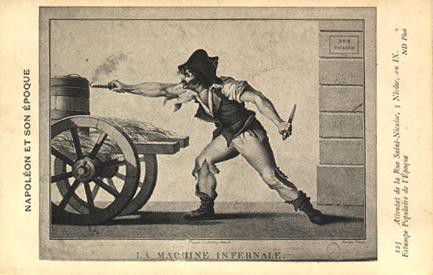Housed in the police station of the fifth arrondissement in Paris, this museum was started by the prefect Louis Lépine, better known from the competition for inventors named after him. This museum, with its manuscripts, prints, portraits, posters and various other exhibits, takes visitors on a journey along the history of the Paris police from the seventeenth century to the present day.
In 1667 Louis XIV created the post of Lieutenant of Police. His mission was summed up in the three short words 'clean, clear, secure'. The museum consequently gives a presentation of one of these first 'Lieutenants', a certain Nicolas de la Reynie. His successors fought hard to maintain public safety on the streets of the capital, attacking notably the crime school the 'Cour des Miracles' (the court of miracles), destroyed in 1668, and regulating traffic problems with the introduction of carriage and public vehicle registration numbers (1725) and the prohibition of double parking (1739).
On 13 July, 1789, as a reaction to the unsettled atmosphere in Paris, volunteers formed a private police force which Lafayette (elected commandant) baptised the National Guard. The museum has a particularly detailed presentation of the Revolutionary period, with some unique documents, notably the decree by the Convention (11 December 1792) ordering the presence before the body of Louis XVI as well as the report of the burial of the dauphin. There are also
warrants of arrest for many well-known names: Beaumarchais, Lavoisier, Charlotte Corday and Madame Roland – to say nothing of one for Josephine (de Beauharnais) dated 2 Floréal, year II (21 April, 1794). Josephine was imprisoned in the Carmes prison until 10 Thermidor Year II (28 July 1794). Engravings of revolutionaries, police officer medals, an ivory whistle and an officer of the peace's truncheon complete the evocation of these troubled times.
In 1800, Bonaparte established the office of Prefect of Police with an eye to putting an end to the instability reigning in police ranks in the later revolutionary years. Louis-Nicolas Dubois was the first to hold title, 8 March, 1800. The decree of 12 messidor, Year VII (1 July 1800) defined in greater detail the duties of the prefect in charge of public safety in Paris. And the immense responsibility weighing on Dubois's shoulders was highlighted graphically by the inquiry into the tragic assassination attempt of rue Saint-Nicaise which killed 26 and wounded 56 more. On 24 Nîvose, Year IX (24 December, 1800), Napoleon was going to the opera by carriage. A few minutes after having passing the rue Saint-Nicaise, there was an explosion, the famous 'machine infernale' or bomb. The exhibits relating to this royalist assassination attempt are notably: engravings; Dubois's report; various documents relating to Georges Cadoudal, the principal suspect, amongst which the prison Temple register dated 18 ventôse Year XII, Dubois's report on the death of inspector Buffet killed by Cadoudal during his arrest, Cadoudal's wallet, parts of the flintlock which was used to ignite the 'infernal machine', etc. The Arena plot – another assassination attempt on the First Consul's life – is also presented here. Prefect Dubois was dismissed as a result of the fire at the Austrian Embassy, 1 July 1810 – he was not at his post when the Empress Marie-Louise was in the building – and he was replaced by Etienne-Denis Pasquier.
Pasquier's incompetent handling of the Malet affair led to his swift departure. Following this the Paris Municipal Guard was disbanded and replaced by the Imperial Gendarmerie. These events are graphically represented by engravings, writings and plaques.
Other documents tell the history of happier moments, notably the birth of the King of Rome. Orders bill-posted in the city demanded the illumination of façades, prohibited movement during the celebrations and also regulated the transport of stone for the construction of the King of Rome's palace at Chaillot. This section on the First Empire finishes with the order for the arrest of Fouché, 18 March 1815 and an autograph document signed by the remarkable Vidoq.
The Second Empire is also well represented, with notably: police uniforms of the period; maps of Paris both before and after the annexation of the suburban communes; a bust of the Prefect Boitelle; parts of uniforms; engravings; and also sketches taken during the Orsini trial after the assassination attempt against Napoleon III and Eugénie, 14 January, 1858. Of special
interest is a replica of the bomb, which killed eight and wounded fifty more.


